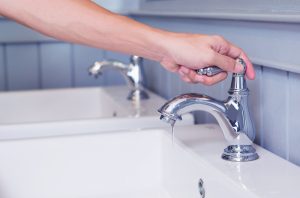You may have seen a service listed on our website among our many other plumbing services for backflow prevention testing. What does that mean, and is it something you may need done?
Backflow prevention is a very important service for the homes that need it, but not all do. It depends on the type of plumbing you have in your home. Below, we’ll explain what backflow prevention is about and how to help you find out if you need it.
Backflow: What It Is and Why It’s a Problem
Backflow occurs when the normal flow of water in your plumbing system reverses. Instead of water flowing cleanly into your home, it moves backward and may bring contaminants into your water supply. This is a serious health risk, as backflow can introduce harmful chemicals, bacteria, and other pollutants into your drinking and bathing water.
The risk of backflow increases when there’s a sudden change in water pressure, such as a burst pipe or a problem with the municipal water supply. Without a proper backflow prevention device in place, contaminated water can flow into your home’s clean water supply, potentially causing illness or other issues.
Backflow Prevention Devices
A backflow prevention device is designed to stop contaminated water from entering your home’s water system. These devices, often installed at key points in your plumbing system, create a barrier that prevents backflow from occurring. There are several types of backflow preventers, including air gaps, check valves, and reduced pressure zone (RPZ) devices. The type of device your home may require depends on your plumbing setup and any local regulations.
Homes That Need Backflow Preventers
Not every home will need a backflow preventer, but there are specific situations where they’re required. Homes with indoor sprinkler systems or irrigation systems, for example, are at a higher risk of backflow contamination. These systems connect directly to your water supply and can potentially introduce contaminants when water pressure drops. In these cases, a backflow preventer is essential to ensure the safety of your drinking water.
Additionally, homes with certain types of appliances or industrial equipment connected to the water supply may also need backflow prevention. It’s important to consult with a professional plumbing contractor to assess your specific needs.
Backflow Prevention Notification
In many areas, backflow prevention devices require regular testing and certification to ensure they are working properly. Local officials usually send notifications by mail to homeowners reminding them when testing is due. Ignoring this requirement can lead to penalties, and more importantly, it can put your family’s health at risk.
Contact Professionals for Backflow Prevention Testing and Certification
If you think your home may need a backflow prevention device, or if you’ve received a notification for certification testing, it’s crucial to work with professionals. We’re a local Warrington plumbing contractor with the proper certification for backflow prevention testing. We’ll ensure your backflow preventer is installed correctly, functions as it should, and meets local regulations.

